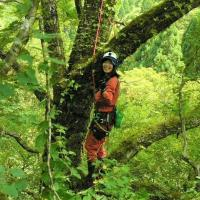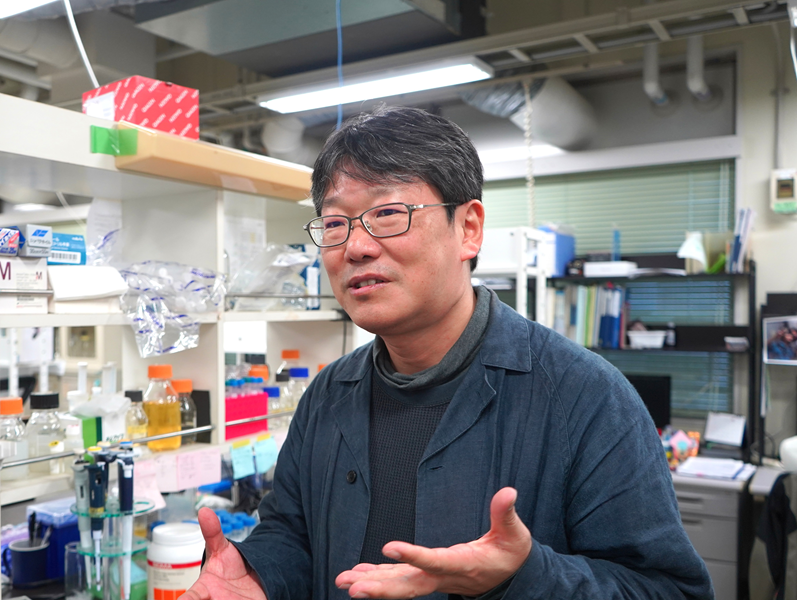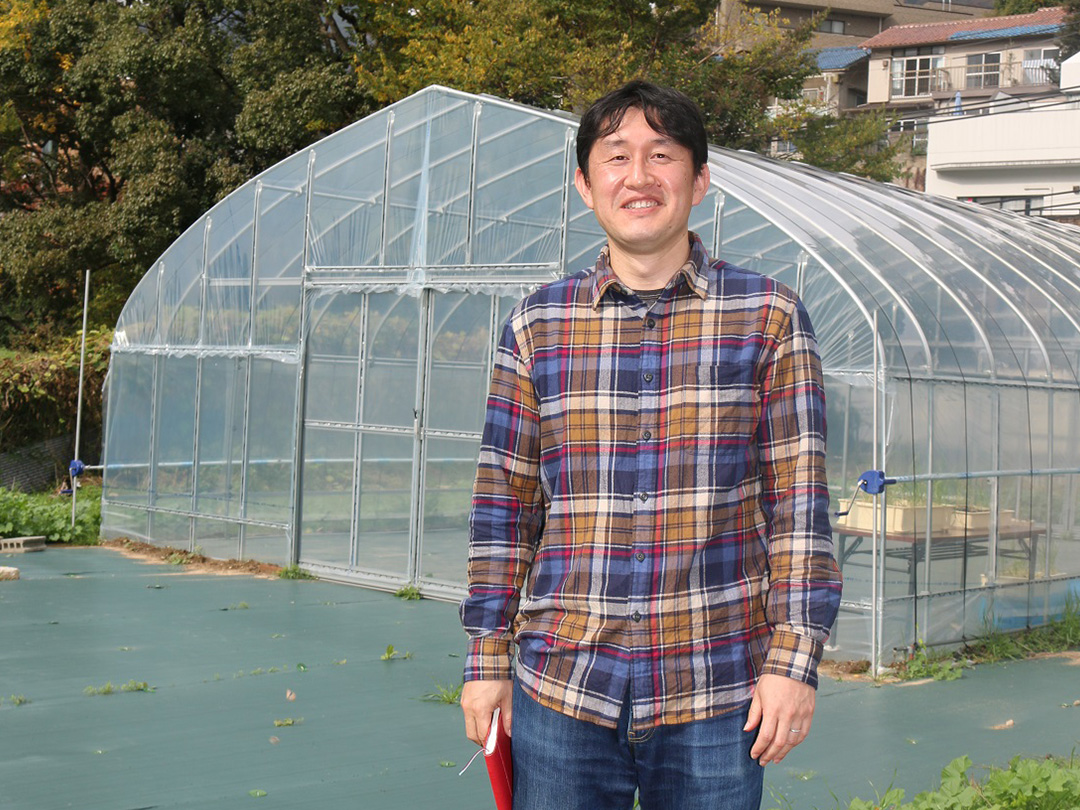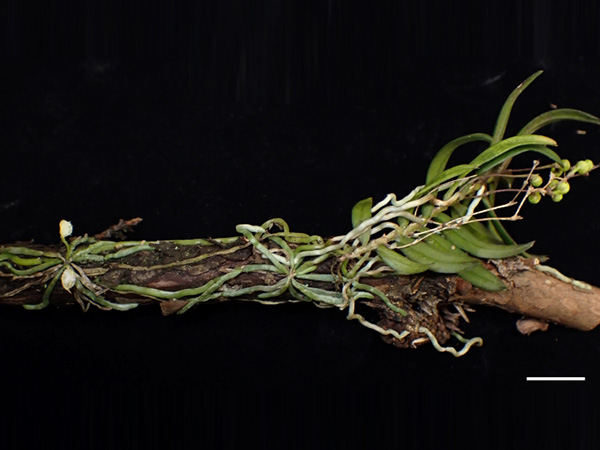A research team led by Associate Professor ISHII Roaki and Doctoral Student AZUMA Wakana from the Kobe University Graduate School of Agricultural Science has discovered that the water storing tissue that they recently found in the world’s tallest tree, Sequoia sempervirens (coast redwood), is also found in Japan’s tallest trees, Cryptomeria japonica (Japanese cedar). The results of this research were published on 4 September 2015 in the online version of the journal “Trees”.
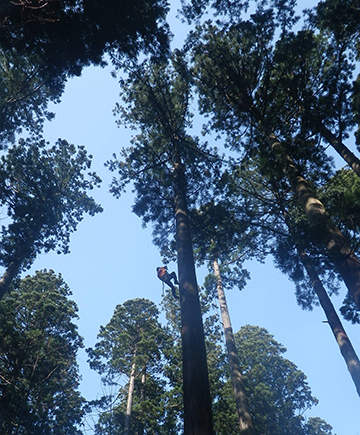
How do tall trees supply water to pinnacle leaves? Until now, it was thought that the highest leaves of tall trees suffered from constant water deficit because the water absorbed by the roots had to be transported a long way. Even among tree physiologists, most research focused on identifying the constraints to water transport, which would define the limits to tree height.
In 2012, Professor Ishii’s research group climbed the world’s tallest redwoods, and collected leaf samples from various heights. They discovered that, with increasing height in the tree, the proportion of “xylem tissue”, which transport water from the roots, decreased, whereas “transfusion tissue”, which store water, increased. They inferred that, in redwood, the stored water came from moisture absorbed through the leaf surface, such as fog and dew.
On 9 September 2014, the group conducted field work in Akita Prefecture to determine whether similar foliar water storage functions existed in Japan’s tallest cedar trees, a close relative of redwood that can reach heights of over 50 meters. They flash-froze the leaf samples using liquid nitrogen and examined them under a cryo-scanning electron microscope. Images of the transfusion tissue revealed that the cells absorbed water and expanded during the night, then contracted during the daytime, confirming that the tallest Japanese cedars have the same foliar water storage functions as coast redwood.
These observations suggest that in tall tree species such as coast redwood and Japanese cedar, water storing tissue in the treetop leaves acts as a water supply tank. The treetop leaves are prone to water deficit. The stored water buffers constraints on water transport and helps to maintain important physiological functions such as photosynthesis. The maximum height of trees is an important factor determining forest productivity and CO2 absorption. Professor Ishii commented, “This research may help to predict future changes in the function of forests in preventing global warming and the effects of climate change on tree growth.”
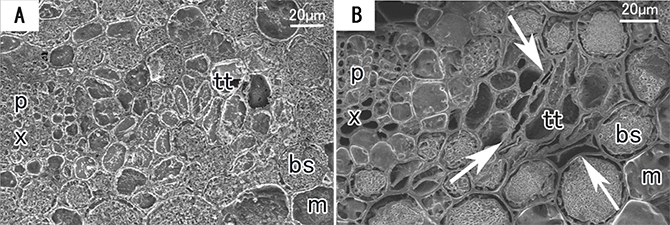
During the night, the cells of transfusion tissue (tt) absorb water and expand (photograph A), but during the daytime the leaves contract (photograph B: taken after sublimation so that cell shapes are visible. p: phloem, x: xylem, bs: vascular bundle sheath, m: mesophyll)
Journal information
- Title
- “Function and structure of leaves contributing to increasing water storage with height in the tallest Cryptomeria japonica trees of Japan”
- DOI
- 10.1007/s00468-015-1283-3
- Authros
- Wakana Azuma, H. Roaki Ishii, Katsushi Kuroda & Keiko Kuroda
- Journal
- Trees


